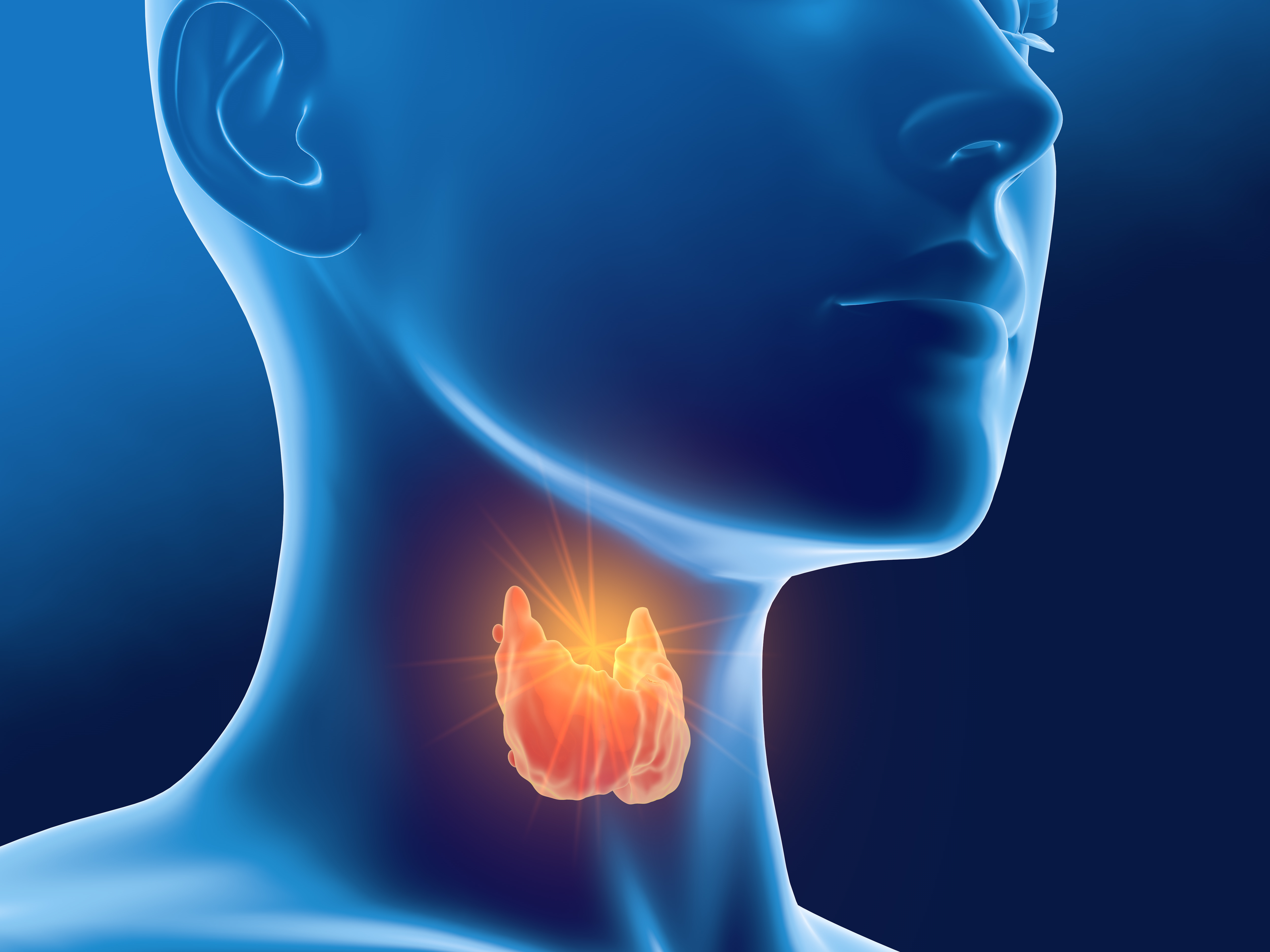Thyroid disorders
Symptoms and causes
Symptoms and causes
What is it?
The thyroid gland is a butterfly-shaped organ located at the front of the neck. The thyroid gland produces thyroid hormones that stimulate metabolism and growth.
What problems could arise?
Thyroid module (thyroid adenoma, thyroid nodule, thyroid cyst)
A thyroid gland may show a nodule or a cyst that has suddenly appeared or was found by chance (and therefore probably has been present for some time). Sometimes a puncture of this nodule or cyst is necessary. This will be evaluated during the consultation.
Goitre - struma - multinodular thyroid gland
With a goitre, the thyroid gland grows larger and contains various nodules, which are usually benign. Sometimes, a puncture of one of these nodules is necessary. This will be evaluated during the consultation.
Hypothyroidism
Hypothyroidism indicates a thyroid that works too slowly. The most common complaints are lethargy, gaining weight, feeling cold and difficulty with bowel movements. Possible causes include:
- Hashimoto's disease: this is a common autoimmune disease that causes the thyroid to work too slowly.
- Recuperation phase of subacute thyroiditis of the Quervain or postpartum thyroiditis. The thyroid shows a phase of hypothyroidism after experiencing a phase of uncontrolled release of the thyroid hormone.
- Central hypothyroidism: the signal from the pituitary gland (small organ in the brain) to the thyroid gland is no longer transmitted correctly; consequently, the thyroid gland works too slowly.
Hyperthyroidism
Hyperthyroidism indicates a thyroid that works too fast. The most common symptoms are heart palpitations, sweating, tremors, anxiety, diarrhoea, emaciation and menstrual changes.
- Grave’s disease: a common autoimmune disease of the thyroid gland that is usually treated with medication. For some people, surgery or treatment with radioactive iodine must be considered.
- Thyroiditis (Quervain thyroiditis): inflammation of the thyroid gland, usually accompanied by severe pain and congestion of the thyroid gland. In this process, the thyroid hormone is released uncontrollably, causing complaints of hyperthyroidism.
- Postpartum thyroiditis (thyroiditis after childbirth) or silent thyroiditis: inflammation of the thyroid gland that develops within one year after childbirth. This involves uncontrolled release of the thyroid hormone, which can lead to symptoms of hyperthyroidism that are sometimes confused with symptoms of postpartum depression or the baby blues.
- Toxic adenoma (toxic nodule): dysregulation of thyroid function due to the presence of an overactive zone in the thyroid gland (hot nodule). This causes symptoms of an overactive thyroid function.
- Autonomous or toxic goitre (autonomously functioning thyroid gland): occurs when several warm nodules work autonomously and no longer 'listen' to the brain (which normally controls the thyroid gland). This causes symptoms of an overactive thyroid function.
Thyroid dysfunction during pregnancy or wish for a pregnancy
During pregnancy, thyroid function is often disrupted. This can evolve into a thyroid that works both too fast and too slow. The anomalies can sometimes have consequences for the foetus, so proper diagnosis and follow-up of these anomalies are important.
Good thyroid function is also important during the preconception period (just before pregnancy). A blood sample from the GP can be used to detect abnormalities and, if necessary, to seek further advice.
Thyroid cancer
Thyroid cancer occurs when a malignant tumour develops in the thyroid gland.
There are four main forms of thyroid cancer: papillary, follicular, medullary and anaplastic. Papillary thyroid cancer is the most common (about 81% of thyroid cancer diagnoses). The main symptom of thyroid cancer is a swelling or lump in the neck, either self-detected or accidentally diagnosed.
If a suspicious lump is detected on an ultrasound scan, an additional puncture of the lump will be performed, if necessary, to enable further diagnostics and to map out further policy.
Once there is suspicion of malignancy, a surgery is planned and, if necessary, additional treatment with radioactive iodine.
Diagnosis and treatment
Diagnosis and treatmentThe cause of the thyroid problem is examined during the consultation by means of an examination and a blood sample. If necessary (and if possible), an ultrasound scan of the thyroid gland is also carried out during the consultation and a specific part of the thyroid gland is punctured.
Treatment centres and specialisations
Treatment centres and specialisations
Latest publication date: 15/05/2024
Supervising author: Dr Boer Mirra



